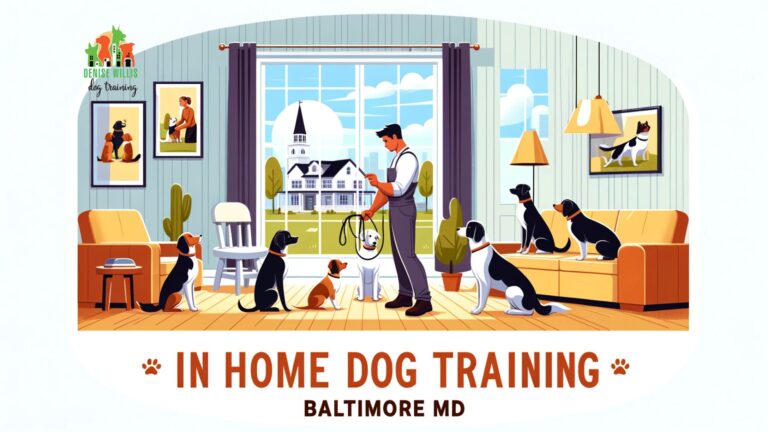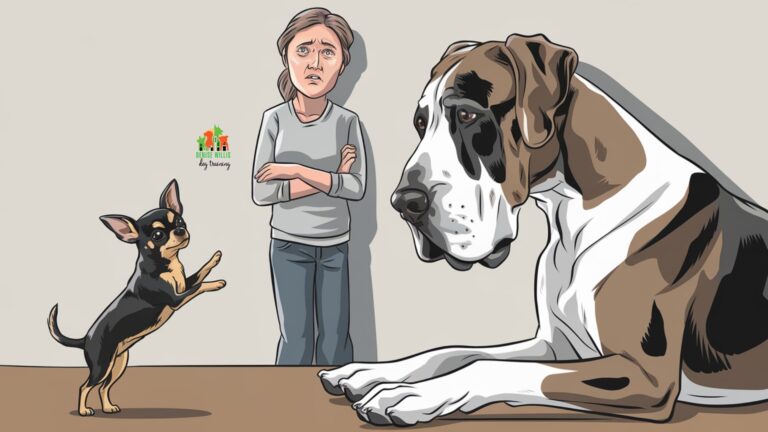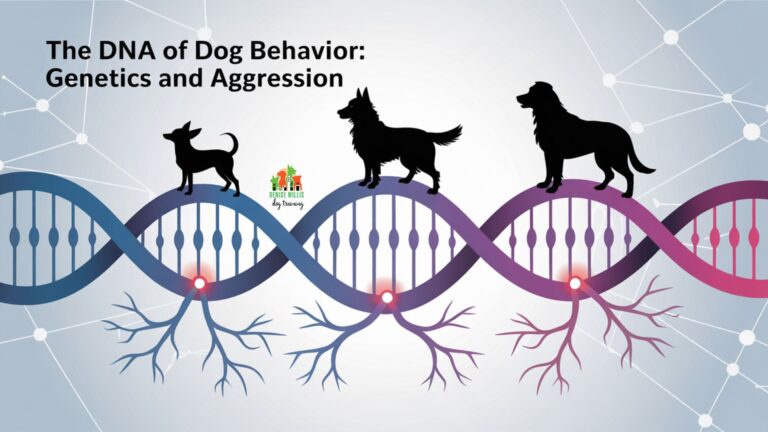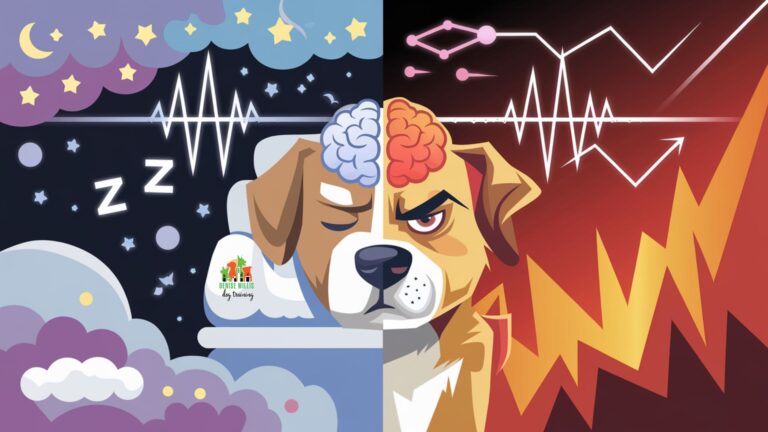Dog Training Baltimore MD: Master the Art of Communication with Your Canine Companion
📍 Service Area Notice: DW Dog Training provides in-person training services exclusively in the Greater Baltimore area. While our blog content is designed to help dog owners internationally, our hands-on training services are locally focused. For readers outside our service area, we hope you find value in our articles and welcome you to reach out with questions!
Baltimore is a city known for its rich history, crab cakes, and dedicated sports fans. As a popular city with a moderate climate, it also has a robust population of dogs who are beloved members of many Baltimore families. Like any major metropolitan area, Baltimore has its fair share of professional dog trainers and obedience schools ready to help local pet parents teach their pups good manners.
An Overview of Dog Training in Charm City
Dog training is an investment of time, energy, and usually money that responsible pet owners make to ensure their faithful companions live happy, balanced lives. Dog training encompasses a wide range of methodologies and customized programs to address basic obedience, behavior issues, socialization challenges, and specialized needs.
While some choose to undertake training their dogs themselves using online advice or library books, most Baltimore dog owners understand the value of an educated trainer who can provide individual attention. Issues like leash pulling, jumping up, barking, anxiety, and aggression are too critical to gamble with unqualified or cookie-cutter advice found through a Google search. A customized approach works best.
The good news is quality dog training in Baltimore is abundant, thanks to the high demand created by the city’s roughly 60,000 registered dogs. From solo pet pros to established training companies and full-scale obedience schools, there are options to suit different needs and budgets.
The Benefits of Dog Obedience Training
Signing up Fido for obedience classes or private lessons in Charm City isn’t simply for bragging rights at the dog park. There are life-changing benefits to well-executed dog training programs, including:
- Improved behavior – Fewer incidents of jumping, nipping, barking, anxiety, aggression, accidents, etc.
- Enhanced public manners – Polite leash walking, waiting at doors, greetings, etc.
- Better social skills – Meeting new people and dogs appropriately.
- Increased inclusion – Bringing your dog more places with confidence.
- Reduced stress – For both pet parents and dogs.
- Lifesaving skills – Solid recall training preserves safety.
- Long-term benefits – Ongoing reinforcement means lasting habits.
- Closer bond – Mutual respect and communication improve relationships.
- Peace of mind – Knowing your dog will listen to you when it really counts.
On a practical level, puppy classes and basic manners courses help young dogs socialize with people, places, and other animals in a positive way during critical developmental windows. Fun agility and sports classes strengthen the human-animal bond through interactive games and challenges.
For mature dogs with existing problems, progress will likely be more difficult initially but succeeds when owners commit to solutions. Rehoming dogs or resorting to questionable methods or equipment out of desperation should always be an absolute last resort.
What to Look for in a Qualified Baltimore Dog Trainer
Dog training isn’t a regulated field in Maryland, meaning minimal barriers to entry for would-be trainers who hang out a shingle. With no required licenses, formal education, or proof of competency, pet owners must educate themselves on what credentials matter.
Hallmarks of an exceptional Charm City dog trainer include:
- Relevant education and credentials – Respected certifications like CPDT-KA (Certified Professional Dog Trainer-Knowledge Assessed) and CBCC-KA (Certified Behavior Consultant Canine-Knowledge Assessed) indicate a commitment to staying current on humane, science-based methodology.
- Hands-on experience – A lifelong dog lover does not equal a competent teacher of dogs. Look for years of documented, professional experience. Facility ownership also demonstrates business acumen.
- Specialized expertise – Generalists have their place, but complex issues like bite risks, seizures, rehabilitation, competition training, etc., often require next-level knowledge.
- Customized programs – Beware of trainers wedded to a single, rigid program applied to all dogs regardless of age, breed, and temperament.
- Realistic promises – Claims of miracle transformations or 100% success rates should prompt skepticism. Changing behavior takes diligence.
- Proven teaching abilities – Working with dogs does not automatically translate to instructing humans. The best trainers educate people on how to communicate with their dogs.
- Solid testimonials and references – Happy customers willing to publically vouch for a trainer’s methods are invaluable resources. An established training business should easily provide examples.
Word-of-mouth praise combined with verified credentials is the gold standard for vetting professional dog trainers in Baltimore. But don’t rely on online reviews alone. Be proactive in asking contacts for trainer referrals relevant to your needs.
Typical Dog Training Options Around Baltimore
Baltimore dog owners have diverse needs and preferences when determining the best training solution for their beloved pets. Dimensional approaches allow customization across several variables:
Setting
- In-home private lessons
- Group classes
- Board and train residencies
- Day training programs
- Obedience camps
Format
- Private, semi-private, small group
- One hour, half day, full day
- Single session, package, membership
- Virtual/online class options
Focus
- Obedience commands
- Behavior modification
- Socialization/exposure training
- Specialized skills
Instructor Qualifications
- Independent trainer
- Pet store staff
- Veterinary staff
- Full-time professional
Methods Utilized
- Treats, toys, praise
- Clicker training
- Verbal / hand signals
- Head collars / front-clip harnesses
- Correction collars (limited, ethical use)
Pricing
- $800+ private lessons
- $2500+ board and train
Pet parents seeking training should realistically assess their commitment level, ability to practice techniques at home, and budget. A sample fee schedule for common formats is outlined later in this article.
Typical Dog Behavior Problems Seen in Baltimore
Baltimore dog owners seek professional training assistance for a range of common behavioral issues including:
- Pulling on leash – Lunging towards objects and people is a frequent complaint, often paired with distracted or inconsistent walking. Head collars can help reorient attention while changed handling techniques are applied.
- Anxiety– Manifesting as destruction, elimination accidents, and vocalization when left alone is sadly quite common these days, made worse after pandemic puppy isolation. Crating, medical intervention, desensitization exercises, and environmental enrichment help counter separation distress.
- Barking – Requests to reduce nuisance barking are among the most frequent trainer calls. Determining the underlying cause and stimulus is key before prescribing management tools.
- Fear/Reactivity – Genetics, lack of socialization, and past trauma can make dogs reactive to strangers, children, and bicycles – all kinds of triggers. Treats, toys, distance management, and incremental positive exposure retrain emotional responses.
- House soiling/Marking – Incompletely housetrained adolescent dogs may backslide and need refreshed direction. Sudden indoor elimination could also indicate anxiety or health issues in mature dogs. Patience, enzymes, and tight supervision get habits back on track.
- Aggression – Growling, snapping, or biting due to resource guarding, territorially, pain response, fear, redirected excitement, or handler confrontation needs careful intervention tailored to the root cause and management steps during modification training.
Positive-based behavior modification programs seek to shift emotional responses by changing what dogs learn to expect in triggering situations. This expands skills for coping with a modern world that looks quite foreign compared to ancestral canine habitats. Some dogs progress quickly, while others require long-term management of hard-wired instincts.
Table 1: Common Behavior Problems in Baltimore Dogs
| Issue | Root Causes | Solutions | Training Equipment |
|---|---|---|---|
| Leash pulling | Distraction, excitement, no loose leash skills | Proper leash handling techniques, counter conditioning, focus rewards | Head halters, no-pull harnesses, martingale collars |
| Barking | Boredom, anxiety, fear, territory guarding, attention seeking | Mental stimulation, counter conditioning, management tools | Interactive feeders, puzzle toys, calming wraps |
| Separation anxiety | Isolation distress, lack of independence | Desensitization, crate training, enrichment activities | Crates, camera monitors, calming aids |
| Reactivity | Fear, lack of socialization, genetics | Graduated exposure, management, counter conditioning | Distance tools, barriers, adaptive equipment |
| House soiling | Incomplete training, anxiety, marking, health issues | Confinement, enzyme cleaners, vet checkups | Crates, baby gates, pheromone plugins |
Common Dog Training Techniques Used in Baltimore
Unpacking buzzwords and terminology heard in conjunction with Baltimore dog training helps clarify what’s myth versus legitimate practice. Methods span a spectrum from pure positive reinforcement to more compulsion-based.
Positive Reinforcement
The most effective and ethical training prioritizes rewarding desired voluntary behaviors using food, toys, play, and praise perceived as pleasant by the trainee. Correct timing is essential so dogs connect actions immediately with receiving goodies or interactions. Rewards phase out over time as new habits become ingrained. This style aligns with behavioral science.
Clicker Training
Clickers serve as “event markers” through their sharp, distinct sound indicating to dogs the precise moment they earned a reward. The split-second clarity and consistency communicate exactly which behaviors get reinforced. Clicker training represents a branch of positive reinforcement focused on precision.
Relationship / LIMA Based
Relationship and LIMA (least invasive, minimally aversive) training incorporates limited, ethical use of corrections only after establishing foundational skills through rewards-based techniques. Pressure sequences that mimic natural canine communication (but don’t rely on physical force or pain) may supplement cues once dogs thoroughly understand baseline commands. This gentle balanced approach works for resistant dogs.
Compulsion / Correction Focused
At the far end of the training spectrum, traditional compulsion programs rely more heavily on physical or verbal corrections as primary teaching means through leash pops, collar jerks, intimidation, or punishment. These confrontational methods face increasing controversy and bans due to elevated risks of physiological and psychological harm. Results depend greatly on precise timing and execution.
Electronic Collars
Remote electronic training collars permit applying a startling tone, vibration, or electrical stimulation at a distance as a “leash pop” substitute. Controversy exists around misuse potential versus benefits for off-leash reliability. When operated ethically at low settings by experts adhering to strict protocol, e-collars can reinforce commands once dogs demonstrate clear understanding.
Cutting-edge humane dog trainers strike a balance using the least invasive approach likely to achieve progress. Living among humans presents dogs with many confusing situations. The goal is to clarify proper choices while preventing undesirable ones.
What Equipment Do Baltimore Dog Trainers Use?
From leashes and collars to interactive toys, Baltimore dog trainers keep well-stocked gear bags. Recommendations vary based on factors like the handler’s capability, dog’s age, breed traits, phase of training, and behavior challenges. Options include:
Everyday Essentials
- Treat pouches – For always having rewards accessible
- Standard leashes and collars/harnesses – For control, safety
- Long lines – Useful for practicing recalls at distances
- Interactive food toys – Keeps dogs stimulated, earning meals
- Clickerers – Precision markers for timing awards
- Crate pads – Promotes dogs relaxing in their dens
Training Aids
- Head collars – Re-routes leash pulling, facilitates attention
- Front-clip harnesses – Reduces resistance by changing geometry
- Muzzles – Allows socialization and vet handling without bite risks
- Calming caps – Muffles sights and sounds causing overreactions
- Anxiety wraps – Soothing compression helps worried dogs relax
Advanced Equipment
- E-collars – For reliable off-leash communication (carefully evaluated)
- Martingale collars – Prevents slipping off during leash pops
- Long lines – Useful for practicing distance commands
- Agility equipment – Channels energy into fun skill building
- Hot dog targets – Signals interaction zone for jumpy dogs
Tackling engrained bad habits often requires upgrading tools to set dogs and owners up for success. Trainers continually expand their educational repertoire as new behavior modification products emerge. Guiding people to select the most appropriate training equipment for their unique situation stems from a trainer’s breadth of experience across many breeds and temperaments.
Why Seek Out A Trainer Early On?
Whether welcoming a new puppy or a recently adopted rescue dog, Baltimore owners rightfully have lots of questions about the when, where, who, and how of training. Planning ahead is strongly advised over waiting for concerning behaviors to emerge and then backpedaling. Preventative training improves lives all around and prevents surrendering dogs later for preventable issues like:
- House soiling
- Destructiveness
- Unruliness
- Aggression
- Anxiety
Ideally, puppy education starts as early as 8 weeks old once critical vaccinations get administered. Early socialization during prime developmental stages prevents common phobias and reactivity. Adolescent dogs also benefit greatly from proactive life skills training well before bad habits cement.
Group puppy kindergarten and basic manners courses prepare young dogs for success in integrating into human families. Safe, structured play sessions with canine classmates build confidence, impulse control, and bite inhibition. At home owners simultaneously reinforce lessons on using designated potties, accustomed to being gently handled, tolerating isolation, walking politely on a leash, and other family etiquette rituals.
For newly adopted dogs with questionable backgrounds, quick enrollment into group classes or private training provides critical diagnostics revealing potential areas needing work. Trainers can evaluate mental soundness, physical mobility, and reactions to novel stimuli during consultations and on-boarding intakes before dogs get immersed with new owners. Remedial socialization prevents predictable disasters.
The adage “can’t teach old dogs new tricks” falsely implies mid-life and senior canines no longer benefit from training. On the contrary – keeping sharp mental faculties engaged slows cognitive decline. Learning games, nosework, and trick routines keep maturing dogs fulfilled. Modifying habitats by adding stairs, traction runners, night lights, and puzzle toys accommodates changing physical abilities. Teaching old dogs new tricks is very doable and highly recommended!
What Should First-Time Clients Expect?
Initiating training with an unfamiliar Baltimore provider understandably raises some nerves for both humans and hounds. Reputable companies ease this transition with polished customer care protocols. Most follow a version of this general intake procedure:
Registration
- Trainers collect contact/vet info, and behavioral history on dogs through calls, forms
Consultation
- Clients detail goals, and challenges. Trainers offer initial recommendations.
First Session
- Orientations explain the methodology, demonstrate techniques, and answer all questions
Evaluation
- Instructors assess canine temperaments, and capacities to tailor programs
Training Begins
- Lesson plans launch based on evaluation findings
Reassessment
- Modifications keep training adaptive as dog capabilities advance
Graduation
- Dogs demonstrate proficiency in skills
Ongoing Support
- Post-graduation check-ins, booster sessions, resources sustain progress
Reputable training businesses invest significantly in recruiting skilled staffers and then continuing education once hired. They welcome rookie clients, encourage questions, and convey realistic expectations before enrolling dogs in group classes or private training packages. Changing behavior takes hard work, so transparency about processes, pricing, and policies prevents frustration.
How Often Do Training Sessions Happen?
Dog training program durations and frequency vary based on format, location, provider preferences, and individual canine temperaments. Some ballpark timeframes for popular arrangements are:
Group Classes
- Once weekly 60-90 minute sessions
- Total course cycles run 4 to 8 weeks
- “Drop-in” arrangements available
Board & Train Packages
- 10-14 consecutive overnight stays
- Full immersion with 24/7 trainers
- Daily training plus play and potty breaks
In-Home Private Training
- Weekly or bi-weekly 45-60 visits
- Owner actively participates
- Short duration but regular consistency
Day Training Programs
- Full or half-day attendance
- Transport to/from the facility
- Training embedded naturally
Inconsistent or sporadic training produces cratered results compared to regulated contact where skills get reinforced consistently. Utilizing mini-training sessions throughout the average day yields faster strides too. Dogs thrive when clear communications remain reliable versus changing drastically across different locations and family members.
What Credentials Should Trainers Have?
Puppy parents researching Baltimore area dog trainers inevitably scratch their heads reading about convoluted certification terminology. Which qualifications truly impact competence? Here’s a decoder glossary translating common professional credentials:
CPDT-KA: Certified Professional Dog Trainer – Knowledge Assessed
- Earned through rigorous exams by reputable Certification Council of Professional Dog Trainers
- Indicates broad expertise in canine behavior, instructional skills, ethics standards
- Recertification required every 3 years through continuing education
CBCC-KA: Certified Behavior Consultant Canine – Knowledge Assessed
- Advanced certification from the same Certification Council
- Confirms specialized behavior modification mastery
- Also renews triennially via proven progressing knowledge
IAABC: International Association of Animal Behavior Consultants
- Respected membership organization of certified professionals
- Promotes continuing education among behavior experts
- Must provide references from veterinary behaviorists
KPA CTP: Karen Pryor Academy Certified Training Partner
- Graduates complete the Karen Pryor Academy curriculum
- Learns cutting-edge clicker training applications
- Only +R-based instructors achieve CTP status
PMCT: Pat Miller Certified Trainer
- Study under renowned trainer Pat Miller
- Utilize a blended training approach, limited corrections
- Embrace force-free handling as much as possible
IMultiple avenues exist for Baltimore dog trainers to demonstrate their grasp of behavioral science, learning theory nuances, instruction competence, and ethical boundaries. Committing extra time and money towards these credentials signifies dedication to their field. Don’t hesitate to ask about certifications!
How Do I Maintain My Dog’s Progress After Classes End?
The key to polished behavior exceeding basic manners lies with owners cementing lessons once formal group classes, private lessons or board & train programs conclude. Slacking off routinely leads to backsliding. Maintaining progress involves:
- Reinforcing Commands Daily – Regular short sessions prevent dogs from forgetting skills
- Randomly Switching Cues – Keeps dogs responding reliably when commands get called unpredictably
- Consistent Execution – Everyone using commands exactly the same way avoids confusion
- Ongoing Socialization – Meeting unfamiliar people/dogs regularly prevents regressing
- Contacting Trainers With Concerns Before They Worsen – Good trainers offer post-graduation support and refreshers
- Troubleshooting Setbacks – Seeking booster sessions if unusual stressors like moves or babies disrupt established habits
- Celebrating Wins – Dogs instinctively repeat behaviors that pay off with cherished rewards
The best home reinforcement tactics feature stuffed interactive toys, tasty surprises, spontaneous play breaks, and affectionate attention saying “Good dog!” Puppies still mastering basics require extra diligence cementing lessons they recently absorbed in confusing human environments. Touching base with trainers around major lifestyle changes helps adjust generalizations.
Pricing Breakdown of Common Baltimore Dog Training
Dog training costs understandably represent a key deciding variable for Baltimore families navigating various options. Prices fluctuate based on program type, inclusion of boarding, private versus group class format, location, instructor expertise, and duration. Here’s an outline of typical investment ranges:
Puppy Group Classes
- $150 to $250 per 6-week course
- Varies by class size
- May offer sibling discounts
In Home Private Training
- $100+ per session
- Discounts are given on packaged blocks
Board & Train Packages
- $8850 to $4,500+ for 3 week programs
- Health and behavioral screening varies
Day Training School
- $40 to $125+ per day
- Half-day and full-day options
Virtual Training Consultations
- $150 to $250 per hour session
- Allows training in client’s own environments
Comparing session frequency, the inclusion of sales tax, policy fine print (discounts, refunds, etc) and ancillary costs makes comparing apples-to-apples pricing more straightforward.
Many shelters and rescue organizations offer free post-adoption behavioral help too. Quality cannot be guaranteed so double checking provider qualifications is strongly advised before enrolling any dog.
Final Thoughts
At DW Dog Training, we believe clear communication and mutual understanding are the keys to a rewarding relationship with your dog. Our experienced trainers have seen it all and can help you overcome frustrating behaviors, strengthen your bond, and ensure safety and enjoyment for all family members.
While the idea of living harmoniously with your four-legged friend may seem out of reach, we are here to tell you it is absolutely achievable with commitment and customized guidance. Training is about so much more than just teaching cues – it builds confidence on both ends of the leash creating space for thriving together.
We choose methods that set dogs up for success, not failure. We equip owners with insight and skills for fluidly communicating in “dog language.” We recognize change doesn’t happen overnight, but brick by brick with resilience, realistic outlooks, and celebrations of little wins.
If past attempts haven’t stuck or concerns are mounting, the time is now. Reach out and describe your situation – let’s connect without judgment about tailored solutions rewarding for your unique pup. Invest in clarity and patience now to prevent stressful surrender later. We can get you there!







